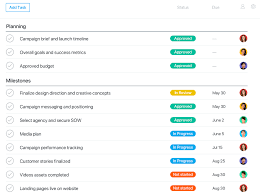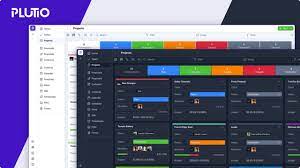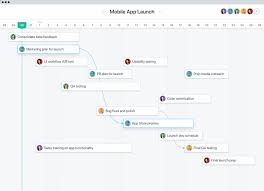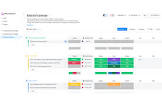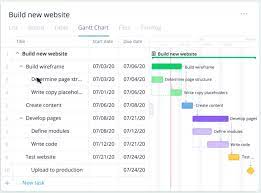Maximising Efficiency with Task Tracking Software in the UK
The Power of Task Tracking Software
Task tracking software has revolutionised the way individuals and teams manage their workloads, deadlines, and projects. This powerful tool provides a centralised platform for creating, assigning, monitoring, and completing tasks efficiently and effectively.
One of the key benefits of task tracking software is its ability to enhance productivity. By having a clear overview of all tasks at hand, users can prioritise their work, set deadlines, and allocate resources accordingly. This helps streamline workflow processes and ensures that no task falls through the cracks.
Collaboration is another essential feature of task tracking software. Team members can easily communicate, share updates, and delegate tasks within the platform. This fosters better teamwork, improves transparency, and enhances overall project management.
Furthermore, task tracking software offers valuable insights into performance metrics and progress tracking. Users can generate reports, analyse data trends, and identify areas for improvement. This data-driven approach enables informed decision-making and facilitates continuous growth and development.
Security is also a priority when it comes to task tracking software. With robust encryption protocols and access controls in place, sensitive information remains protected from unauthorised access or breaches.
In conclusion, task tracking software is a versatile tool that empowers individuals and teams to stay organised, collaborate effectively, monitor progress efficiently, and enhance overall productivity. Embracing this technology can lead to smoother workflow management, improved communication within teams, better project outcomes, and ultimately greater success in achieving goals.
Mastering Task Management: A Guide to Task Tracking Software Essentials for Individuals and Businesses
- What is task tracking software and how does it work?
- What are the key features of task tracking software?
- How can task tracking software benefit individuals and teams?
- Is task tracking software suitable for small businesses or only large enterprises?
- Are there any recommended task tracking software options available in the market?
- How secure is task tracking software in terms of data protection and privacy?
What is task tracking software and how does it work?
Task tracking software is a valuable tool designed to help individuals and teams manage their tasks, projects, and deadlines effectively. It provides a centralised platform where users can create, assign, monitor, and track tasks from start to finish. Task tracking software works by allowing users to input task details such as descriptions, due dates, priority levels, and assignees. Tasks can be categorised, organised into lists or projects, and easily accessed for updates and progress tracking. Users can set reminders, receive notifications for upcoming deadlines, collaborate with team members, and generate reports to analyse performance metrics. Overall, task tracking software simplifies task management processes, enhances productivity, improves communication within teams, and facilitates efficient workflow management.
What are the key features of task tracking software?
Task tracking software offers a range of key features designed to streamline task management and enhance productivity. Some essential features include task creation and assignment capabilities, enabling users to easily create tasks, set deadlines, assign them to team members, and track progress. Additionally, these tools often provide collaboration features such as real-time communication, file sharing, and commenting functionalities to facilitate teamwork. Task tracking software also typically includes prioritisation options, status updates, notifications for approaching deadlines, and reporting tools for tracking performance metrics. These features collectively help users stay organised, improve workflow efficiency, and achieve project goals effectively.
How can task tracking software benefit individuals and teams?
Task tracking software offers a multitude of benefits for both individuals and teams. For individuals, it provides a structured approach to managing tasks, deadlines, and priorities, leading to increased productivity and efficiency. The software helps users stay organised, focused, and on track with their work, reducing the risk of missing deadlines or forgetting important tasks. For teams, task tracking software promotes collaboration, transparency, and accountability by enabling seamless communication, task delegation, and progress monitoring. This fosters a cohesive working environment where team members can easily coordinate efforts, share updates, and collectively work towards achieving common goals. Ultimately, task tracking software empowers individuals to manage their workload effectively and enables teams to streamline workflow processes for enhanced productivity and success.
Is task tracking software suitable for small businesses or only large enterprises?
Task tracking software is suitable for businesses of all sizes, including small businesses and large enterprises. While larger companies may have more complex project management needs and larger teams to coordinate, small businesses can also benefit significantly from task tracking software. These tools provide a structured approach to managing tasks, deadlines, and projects, which can help small businesses improve efficiency, productivity, and overall organisation. By using task tracking software, small businesses can streamline their workflow processes, enhance collaboration among team members, monitor progress effectively, and ensure that tasks are completed on time. Ultimately, task tracking software can be a valuable asset for small businesses looking to boost productivity and achieve their business goals.
Are there any recommended task tracking software options available in the market?
When it comes to task tracking software, the market offers a wide range of options to cater to different needs and preferences. Some popular and highly recommended task tracking software options include Trello, Asana, Monday.com, Jira, and Todoist. Each of these platforms comes with its unique features and capabilities, allowing users to customise their task management experience based on their requirements. Whether you are looking for a simple and intuitive interface or a more robust solution with advanced project management functionalities, there is a task tracking software out there that can meet your specific needs. It is advisable to explore these recommended options further to determine which one aligns best with your workflow and objectives.
How secure is task tracking software in terms of data protection and privacy?
Ensuring data protection and privacy is a top priority when it comes to task tracking software. Most reputable task tracking software solutions implement robust security measures, such as encryption protocols, access controls, and regular security updates, to safeguard sensitive information from unauthorized access or breaches. By adhering to industry best practices and compliance standards, task tracking software providers strive to maintain the confidentiality and integrity of user data. Users can have peace of mind knowing that their tasks, projects, and personal information are handled with the utmost care and diligence to uphold data protection and privacy standards.



